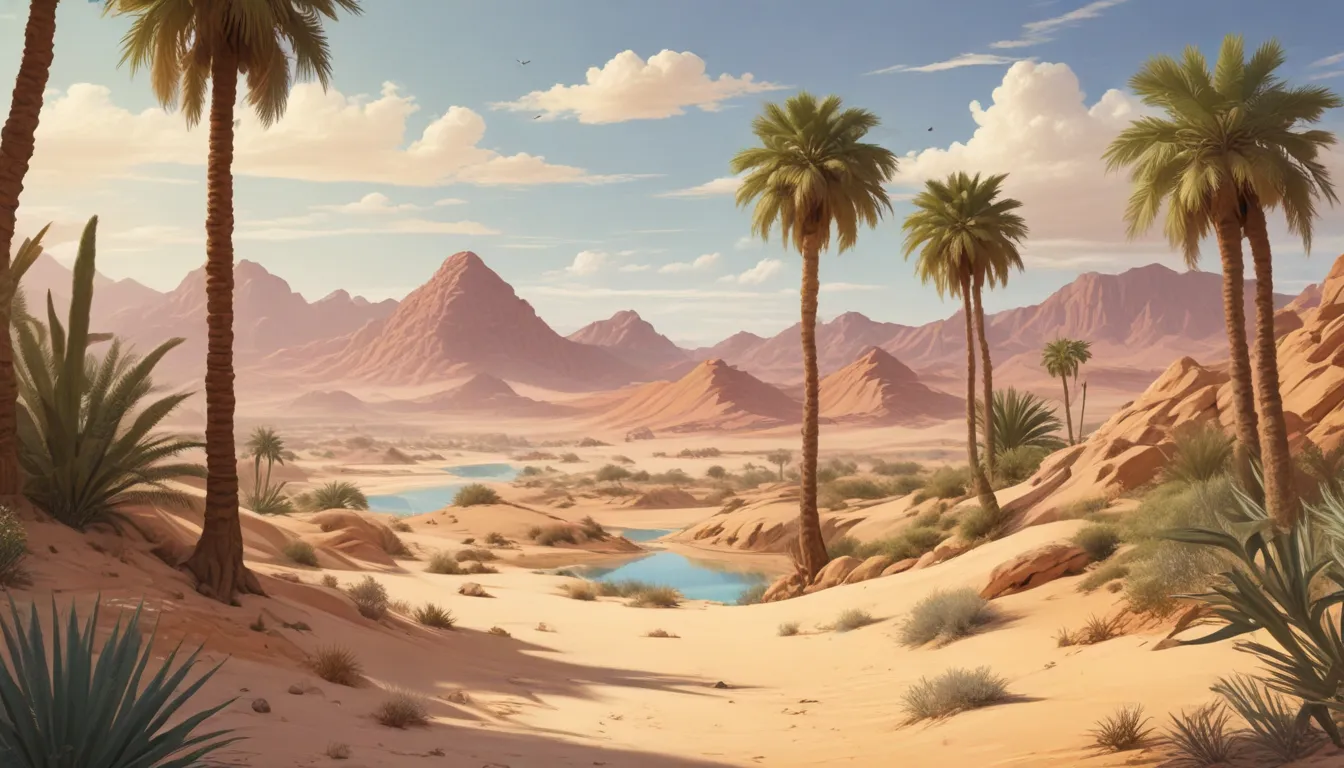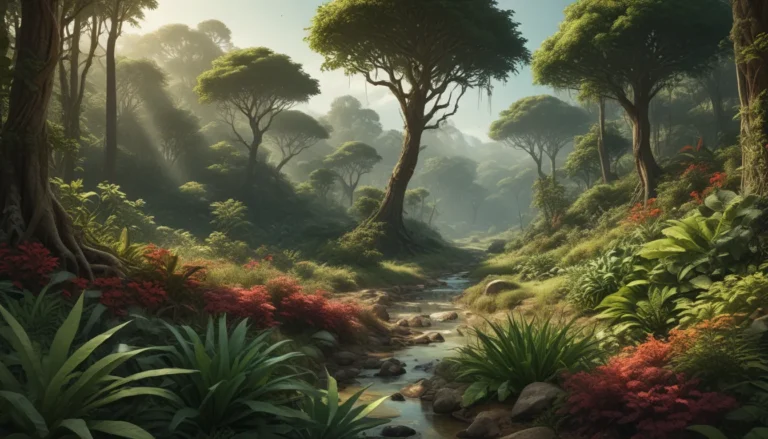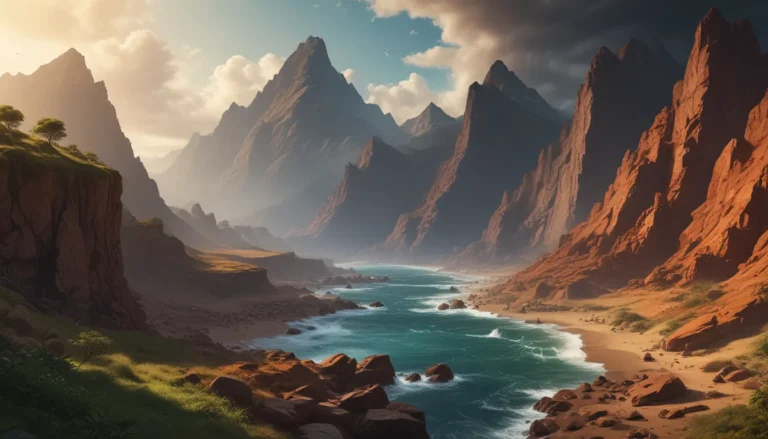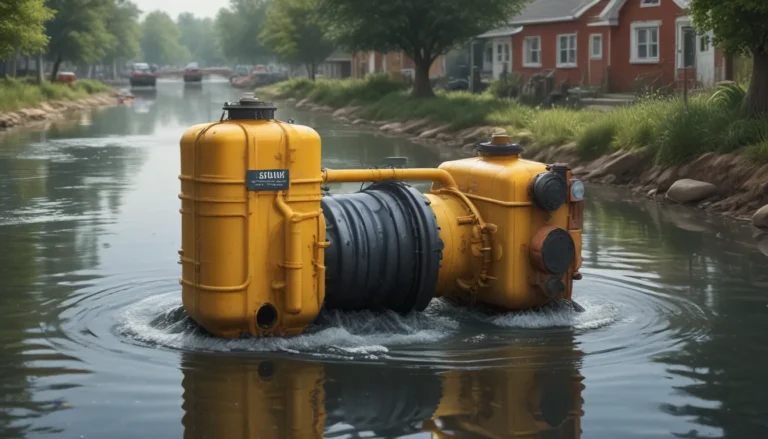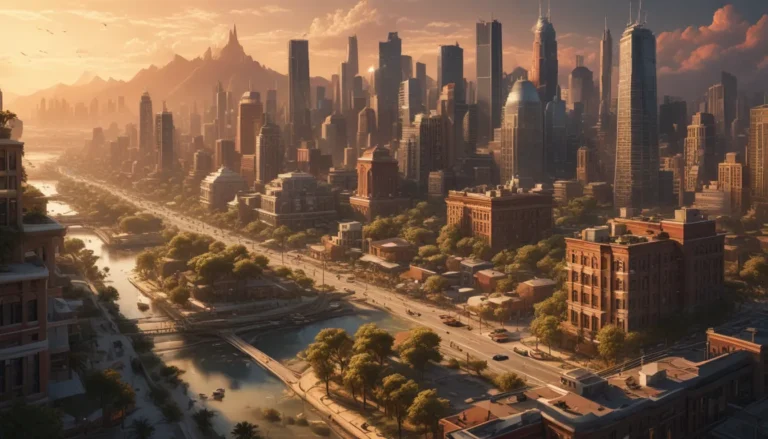A Note About Images: The images used in our articles are for illustration purposes only and may not exactly match the content. They are meant to engage readers, but the text should be relied upon for accurate information.
Are you drawn to the allure of oases, those hidden gems amidst vast deserts that offer a glimpse of lush greenery and life-sustaining waters? Oases have long captured the imagination of adventurers and geographers alike, providing a sanctuary of resilience and beauty in harsh environments. Join us on a journey through the enchanting world of oases as we uncover 20 astonishing facts that will leave you in awe. From their remarkable formation processes to the vital ecosystems they support, oases are true marvels of nature waiting to be explored.
Unlocking the Mysteries of Oases
A Hidden Oasis in the Desert
Picture an oasis, a picturesque scene of vibrant greenery flourishing amidst the barren expanse of a desert. Oases are like hidden treasures, offering a stark contrast to the surrounding arid landscape, showcasing the power of nature to thrive against all odds.
The Lifelines of the Desert
Oases serve as lifelines for both humans and wildlife, providing a vital source of water and sustenance in environments where such resources are scarce. These havens of life play a crucial role in supporting diverse ecosystems in the midst of desolate deserts.
Delving into the Enigmatic World of Oases
The Oasis Effect
The presence of water and vegetation in oases creates a unique microclimate that significantly impacts the surrounding environment. By reducing temperatures and increasing humidity levels, oases play a vital role in shaping the local climate.
Diverse Ecosystems
Step into an oasis, and you’ll find yourself surrounded by a remarkable array of plant and animal species that have adapted to thrive in this challenging environment. Oases are biodiversity hotspots, harboring rare flora and fauna found nowhere else.
Origins of the Word
The term “oasis” traces its roots back to the ancient Egyptian word “w?’t,” meaning a fertile place in the desert. This ancient word perfectly encapsulates the essence of these verdant paradises amidst arid landscapes.
Ancient Oases
Throughout history, oases have been essential hubs for trade, resting spots for weary travelers, and centers of civilization. These oases have played a pivotal role in shaping human history and cultural development.
Discovering the Wonders of Oases
The Great Sahara Oasis
The Sahara Desert, the largest hot desert in the world, boasts several iconic oases such as the Siwa Oasis and the Siwa Lake, each with its own unique charm and allure. These oases stand as testaments to the resilience of life in extreme environments.
The Beauty of Date Palms
Date palms, a common sight in oases, are revered for their delicious and nutritious fruits. These majestic trees not only provide sustenance but also serve as a symbol of abundance and fertility in desert landscapes.
Underground Water Sources
Many oases are sustained by underground water sources such as springs or aquifers, ensuring a constant supply of water even during arid periods. This underground network keeps oases thriving in the face of unpredictable climate conditions.
The Role of Ancient Aqueducts
Human ingenuity has played a crucial role in maintaining oases through the construction of intricate aqueduct systems that transport water to distant cities. These historical feats of engineering have enabled civilizations to flourish in arid regions.
Appreciating the Resilience of Oases
Mysterious Underground Lakes
Some oases sit atop underground lakes, creating a mesmerizing natural spectacle that defies conventional wisdom. These hidden bodies of water beneath the desert floor add to the allure and mystique of oases.
Oases as Biodiversity Hotspots
Due to their unique conditions, oases become hotspots of biodiversity, nurturing rare and endemic plant and animal species. It’s within these oases that nature showcases its ability to adapt and thrive in the most challenging of environments.
Modern Oasis Tourism
Today, oases have become popular tourist destinations, offering visitors a chance to experience the tranquility and beauty of these natural wonders. From guided tours to cultural experiences, oases provide a unique window into the world of desert ecosystems.
Protecting Oases
As fragile ecosystems, oases require careful conservation efforts to preserve their natural beauty and ecological balance. Continued protection from development, climate change, and unsustainable water usage is essential in ensuring the survival of these invaluable habitats.
Embracing the Legacy of Oases
Oasis Agriculture
Oases have long played a significant role in enabling agriculture in arid regions, with ancient irrigation techniques supporting the cultivation of crops. The fertile lands of oases have sustained communities for generations, showcasing the ingenuity of desert farming practices.
An Oasis in Space
Even in the vast expanse of space, oases exist in the form of interstellar clouds where new stars are born. These celestial oases serve as reminders of the enduring cycle of life and renewal that transcends earthly boundaries.
Cultural Significance
Throughout history, oases have held great cultural significance, inspiring art, literature, and folklore in desert-dwelling societies. The lush landscapes of oases have fueled the imagination of artists and storytellers for centuries.
Oases in Popular Culture
Oases have left an indelible mark on popular culture, appearing in films, books, and songs that celebrate the beauty and mystery of these natural wonders. Their enchanting allure continues to captivate audiences around the world.
Preserving Traditional Oasis Architecture
The unique architecture of oases, characterized by mud-brick buildings and wind towers, reflects the resilience and adaptability of desert communities. Preserving these traditional structures is essential in honoring the heritage of oasis cultures.
Celebrating the Symbol of Resilience
Oases stand as symbols of resilience and adaptability, showcasing the remarkable ability of life to thrive in the harshest of environments. These verdant paradises serve as reminders of the beauty and strength found in the most unlikely of places.
As we journey through the world of oases, we uncover a tapestry of wonder, beauty, and significance that transcends the boundaries of deserts and time. From the ancient origins of oases to their modern-day impact on ecosystems and communities, these natural phenomena continue to captivate and inspire us with their resilience and beauty.
Conclusion: Embracing the Oasis of Life
Exploring the wonders of oases is a journey filled with awe and discovery, offering a deeper appreciation for the intricate balance of life in harsh environments. As we marvel at the lush landscapes and diverse ecosystems of oases, let us remember the vital role they play in sustaining life and inspiring admiration for the power of nature.
Frequently Asked Questions
- What is an oasis?
-
An oasis is a fertile area in the desert that contains a water source, providing a haven for plant and animal life in arid landscapes.
-
How are oases formed?
-
Oases are formed through various processes, such as the movement of underground water to the surface or the presence of natural depressions that collect water, creating unique ecosystems.
-
Are oases protected?
-
Many oases are recognized as important ecological and cultural sites and are protected by authorities to ensure their preservation and sustainable use of resources.
-
Can people live in oases?
-
Yes, oases have been inhabited for centuries due to their reliable water supply and fertile land, supporting agriculture and settlement for local communities.
-
Are oases affected by climate change?
-
Oases are vulnerable to the impacts of climate change, including decreased rainfall and rising temperatures, threatening their stability and the communities that rely on them.
-
Are there any famous oases?
-
Yes, there are several famous oases worldwide, such as the Siwa Oasis in Egypt and the Huacachina Oasis in Peru, known for their stunning landscapes and cultural heritage.
-
Can you swim in an oasis?
- Some oases may have designated swimming areas or natural pools for visitors, but it’s important to respect local regulations and preserve the ecosystem while enjoying recreational activities.
Embark on a journey of discovery and appreciation for these remarkable oases that defy the odds and sustain life in the most challenging environments. Let the allure of these desert paradises inspire you to explore the wonders of nature and the resilience of life against all odds.
